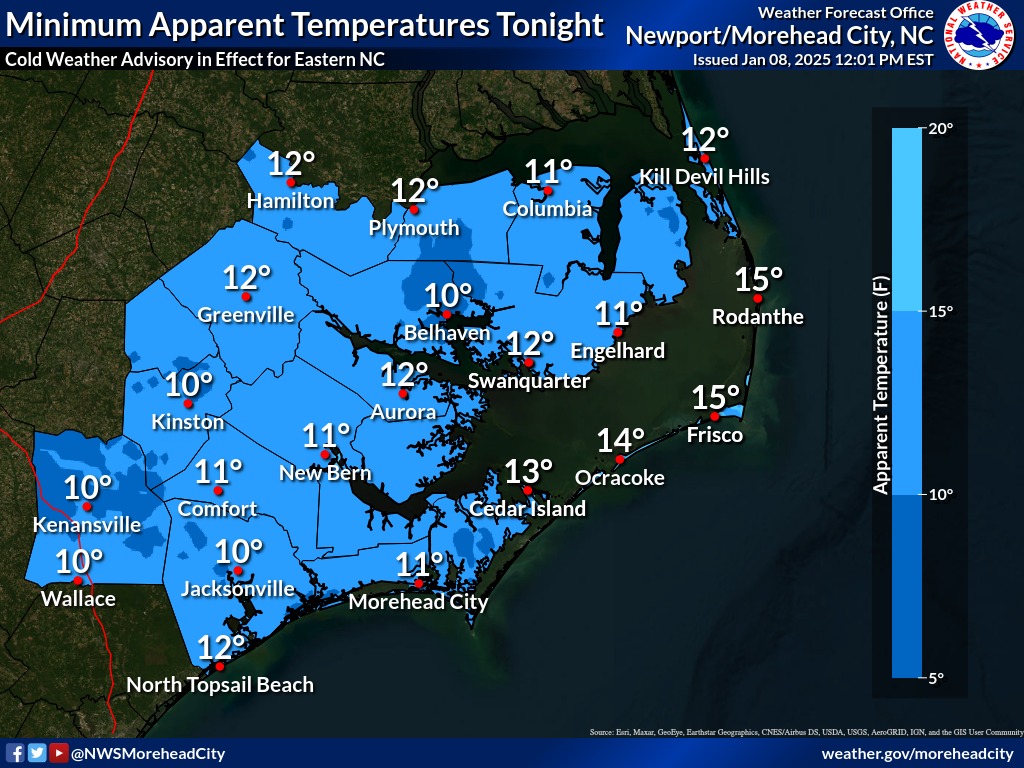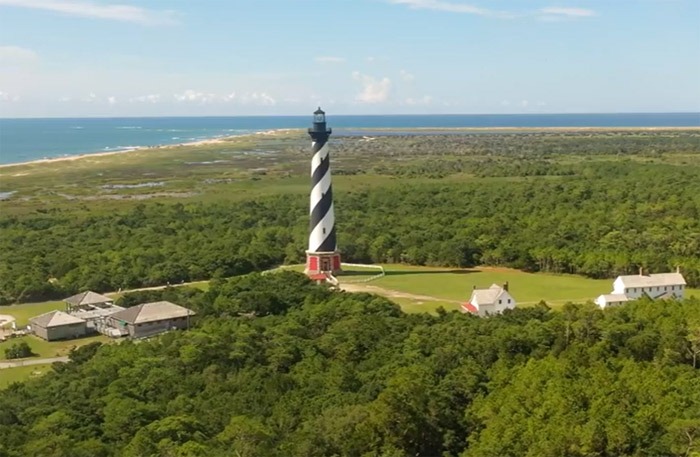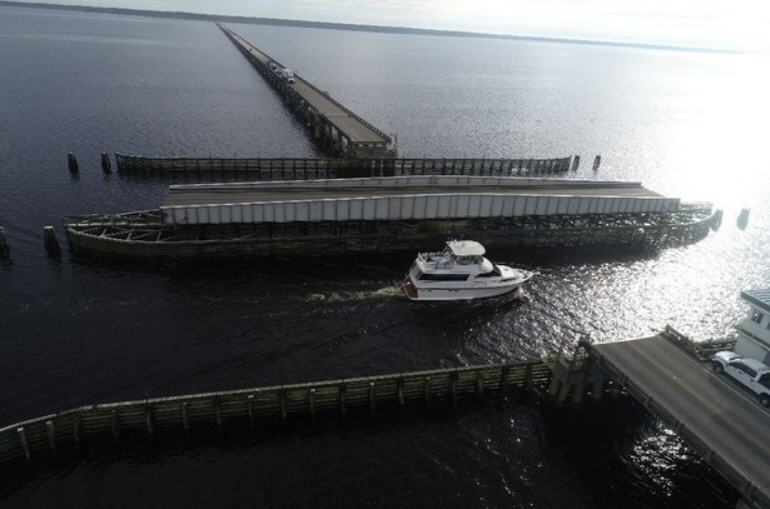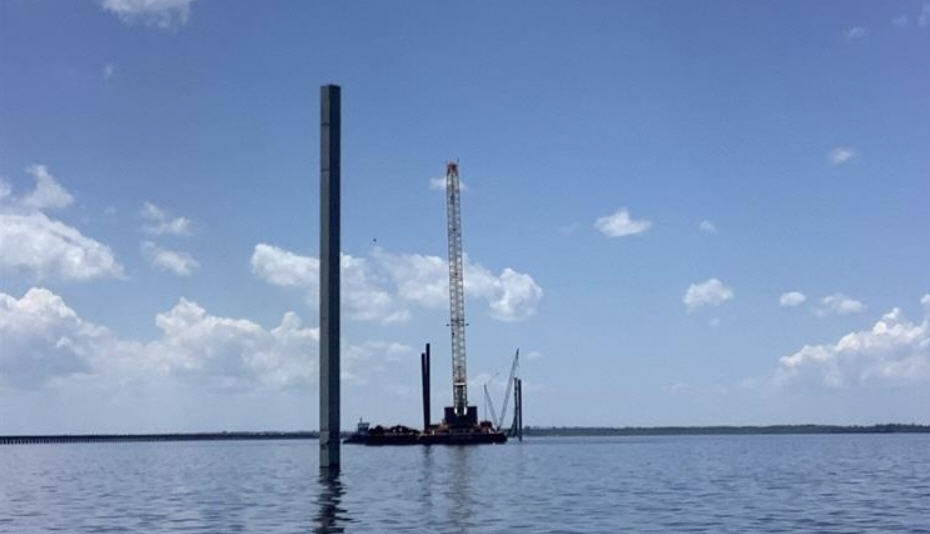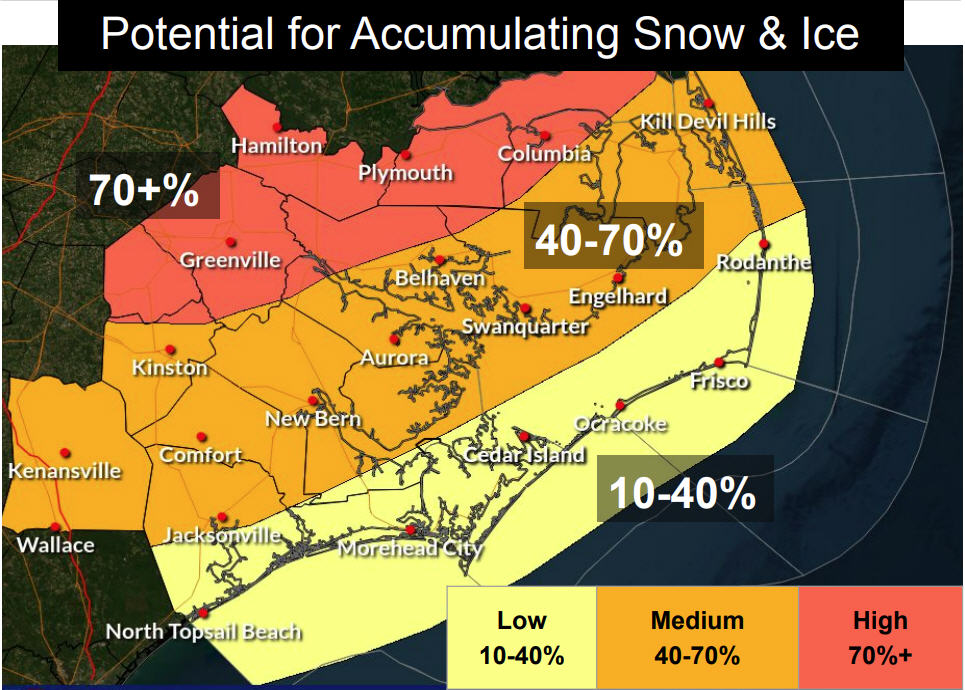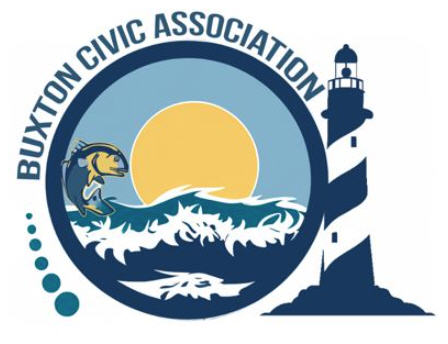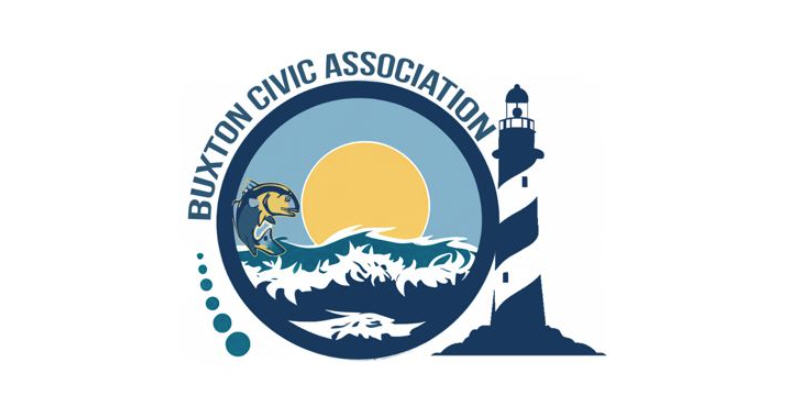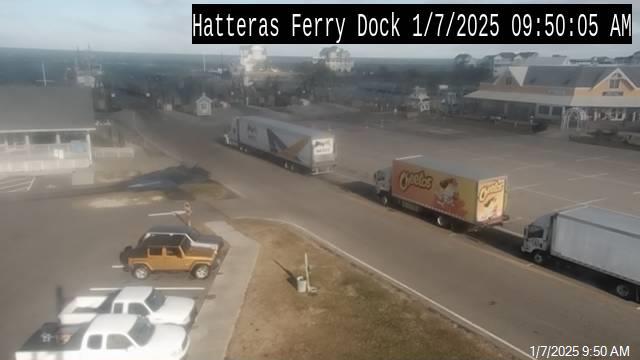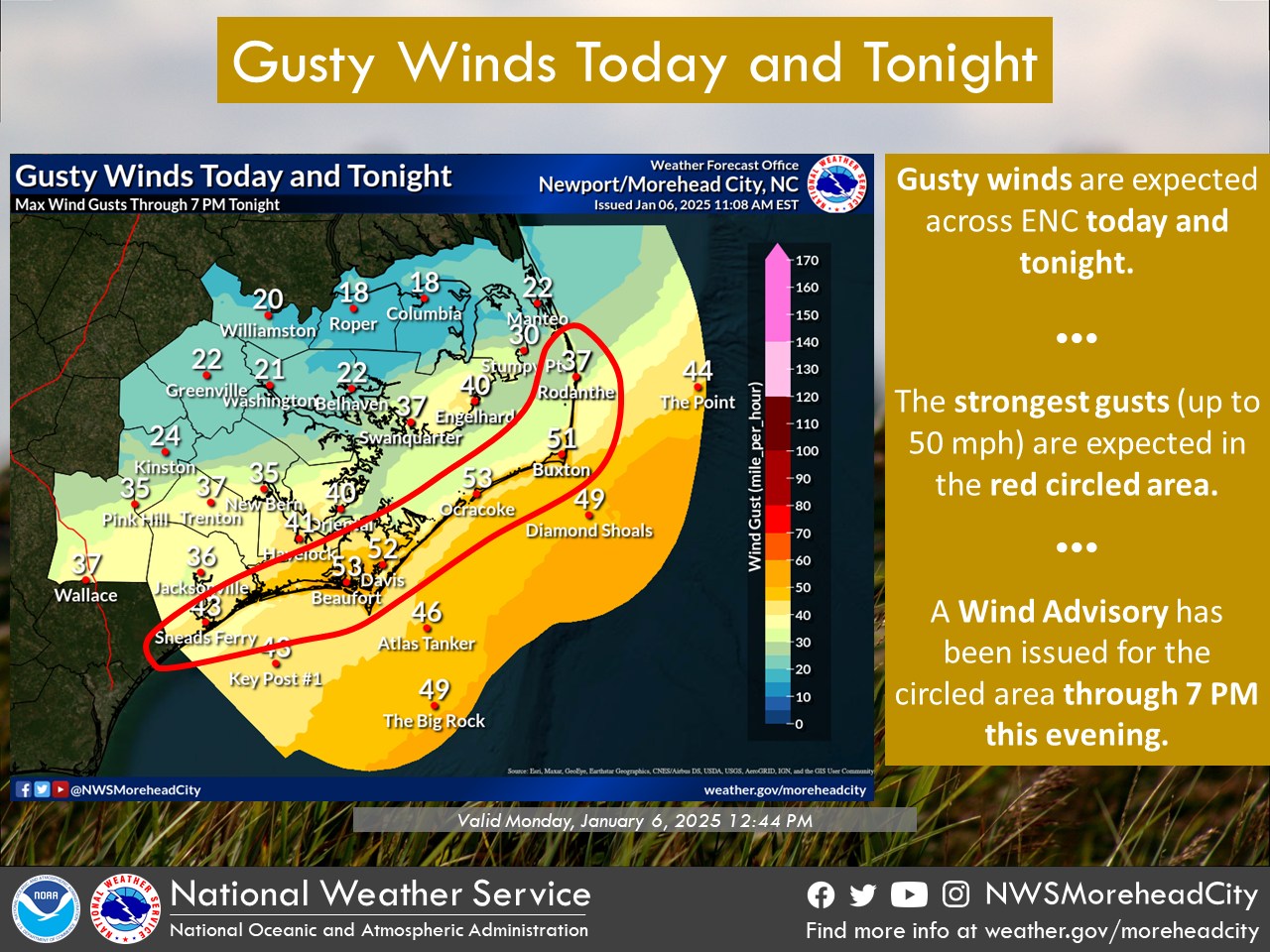Habitat restoration for migratory birds near Oregon Inlet begins this week
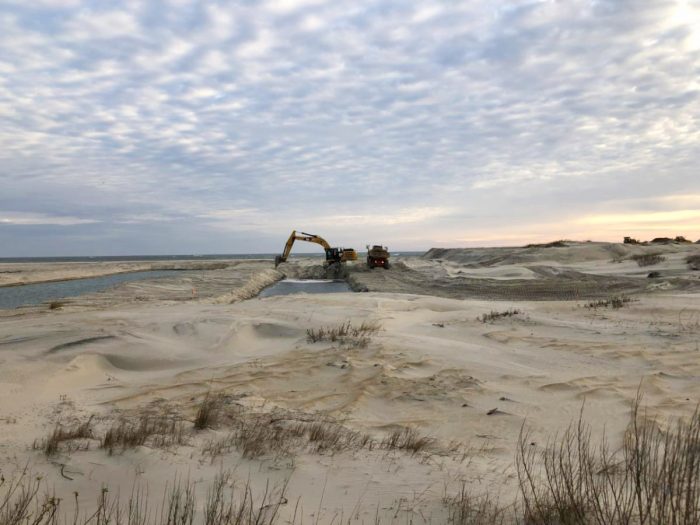
Habitat restoration activities will begin this week on Pea Island National Wildlife Refuge. Partners at the North Carolina Department of Transportation (NCDOT) and contractors with Fred Smith Construction will excavate sand in an area behind the Oregon Inlet Terminal Groin. They will be digging out sections within a 3-acre area in order to create open water intertidal pool areas for multiple shorebird species.
Per a press release, the refuge anticipates approximately 25,000 cubic yards of sand will be excavated and deposited on the upper beach adjacent to the work area. It is estimated that the work will take 1-3 weeks to complete (weather permitting).
As part of the ongoing planning efforts with the NC 12 Transportation Management Plan, NCDOT requested a new permit from Pea Island National Wildlife Refuge to retain the Oregon Inlet Terminal Groin.
When the Terminal Groin permit was updated in 2012, it required several monitoring and management conditions, including moving sand to create suitable habitat conditions for migratory birds or other federal trust species within 0.5 miles of the terminal groin. It was anticipated that habitat management would be necessary at approximately 5-year intervals plus or minus 2-years, depending upon storm frequency and intensity, and habitat monitoring results.
These actions have occurred several times in the past 10 years, in the winters of 2008, 2011, 2014, and 2020. It is anticipated that by the moving of sand to create moist sand and intertidal pool habitats with unvegetated shoreline that habitat quality for these nesting shorebirds and waterbirds will be greatly improved. These habitats are important areas for foraging, breeding, and nesting activities of many different shorebirds including piping plovers, black skimmers, American oystercatchers, and least terns.




